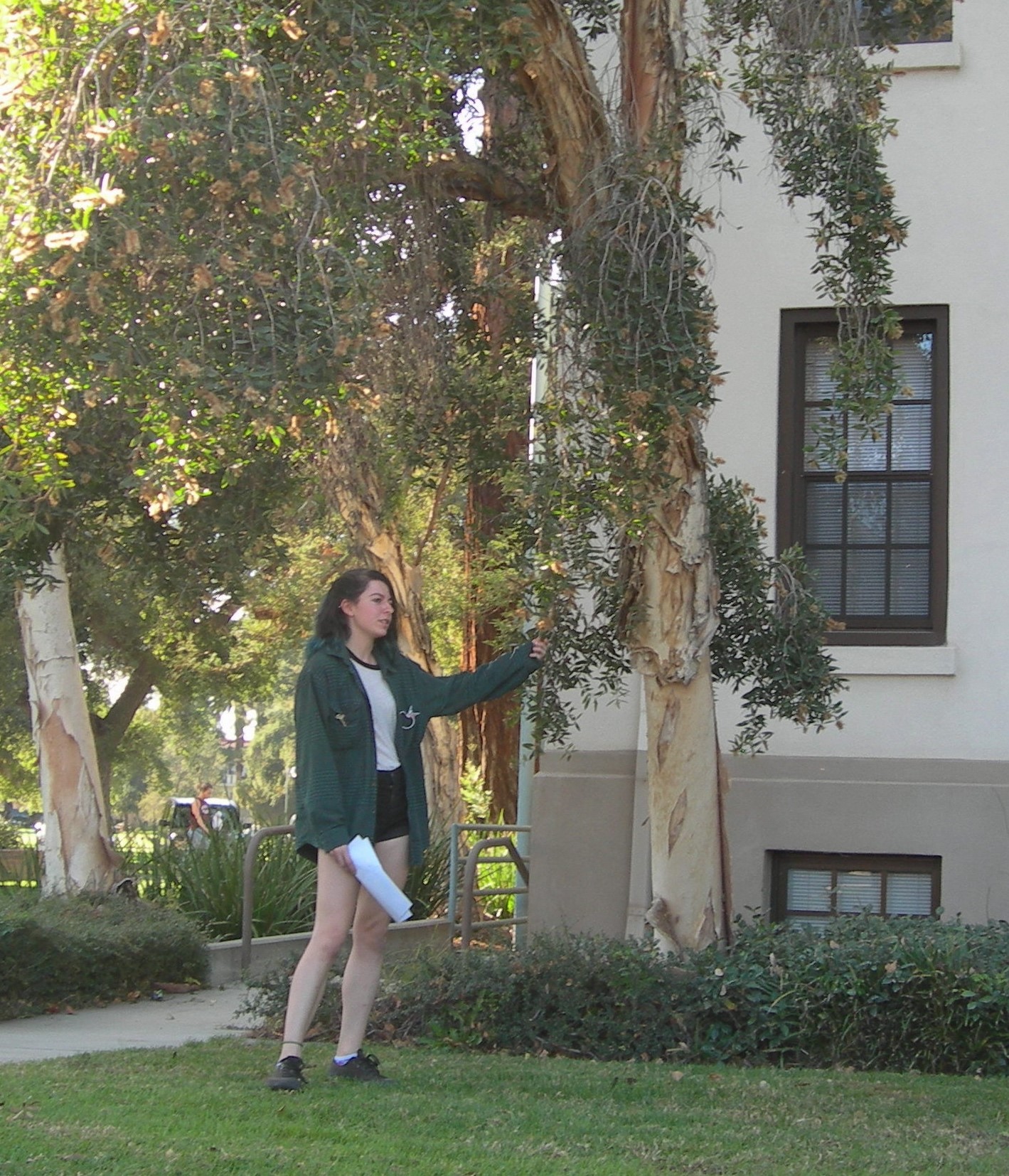University of Redlands Emergency Alert System
Alert Received: . For more information, visit: https://www.redlands.edu/alert/
University of Redlands
- Home
- Trees
- Species Accounts
- Cajeput Tree
Common Name: Cajeput Tree; Punk Tree; Broadleaved Paperbark
Scientific Name: Melaleuca quinquenervia
Family: Myrtaceae (Eucalyptus)
Identification
Distinguishing characteristics
Habit: Grows to a height of 25-50 ft (8-15 m), and spreads out to 16-32 ft (5-10 m), taller than wide. Paperbark Tree (SelecTree, 2017)
Paperbark Tree (SelecTree, 2017)
Leaves: Leaves are evergreen, oblong, and light green in color, around 2-5 (5-12 cm) long, 0.4-1.2 in (1-3 cm) wide, and arranged alternately.
 Paperbark Leaf (SelecTree, 2017)
Paperbark Leaf (SelecTree, 2017)
Twigs & Bark: Young twigs are covered with soft hairs. Has fruit spikes on branches. Older stems have spongy white to cream bark that peels off in layers. Sap is an irritant. Paperbark Bark (Wikipedia, 2017)
Paperbark Bark (Wikipedia, 2017)
Flowers & Fruits: Has clusters of white, pink, purple or yellow flowers that appear in the Summer or Fall. Flowers contain both male and female parts. Fruit is a small woody capsule and not edible. Paperbark Flowers (Wikipedia, 2017)
Paperbark Flowers (Wikipedia, 2017) Paperbark Fruits (SelecTree, 2017)
Paperbark Fruits (SelecTree, 2017)
Where it’s from
Native Range: Eastern Australia and surrounding islands, including Papua New Guinea. (Also grown in portions of Africa, Asia and throughout the southern United States.) Grows in plains, swamps, and estuary margins (can tolerate some salt). Typically grows best in silty or swampy soil, and has a place in the savannah biome. Paperbark Native Range
Paperbark Native Range
By Min B. Rayamajhi, USDA Agricultural Research Service, Bugwood.org - http://www.invasive.org/browse/detail.cfm?imgnum=0002122, CC BY 3.0, https://commons.wikimedia.org/w/index.php?curid=15515037
Ecological Notes: It is susceptible to fungal infection and root rot. Fruit releases tiny, wind-dispersed seeds annually. Seeds of the plant sprout rapidly following instances of fire. Flowers produce nectar consumed by insects, birds, and bats. Is a highly invasive species in Florida.
What we use it for
References
Biographer Madison Dunlap `21, FYS 20: Plants in Our World, Fall 2017
Madison Dunlap `21, FYS 20: Plants in Our World, Fall 2017